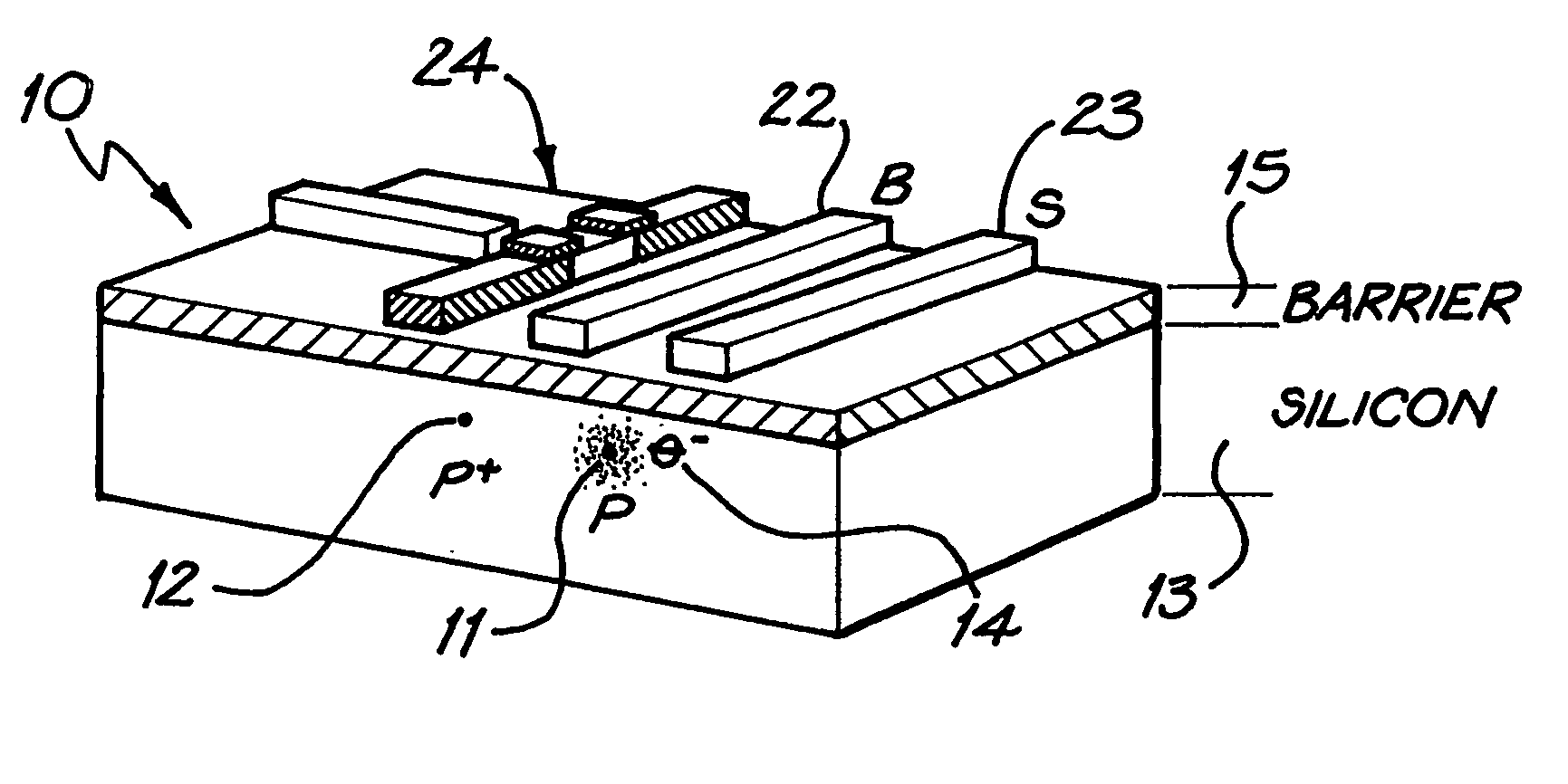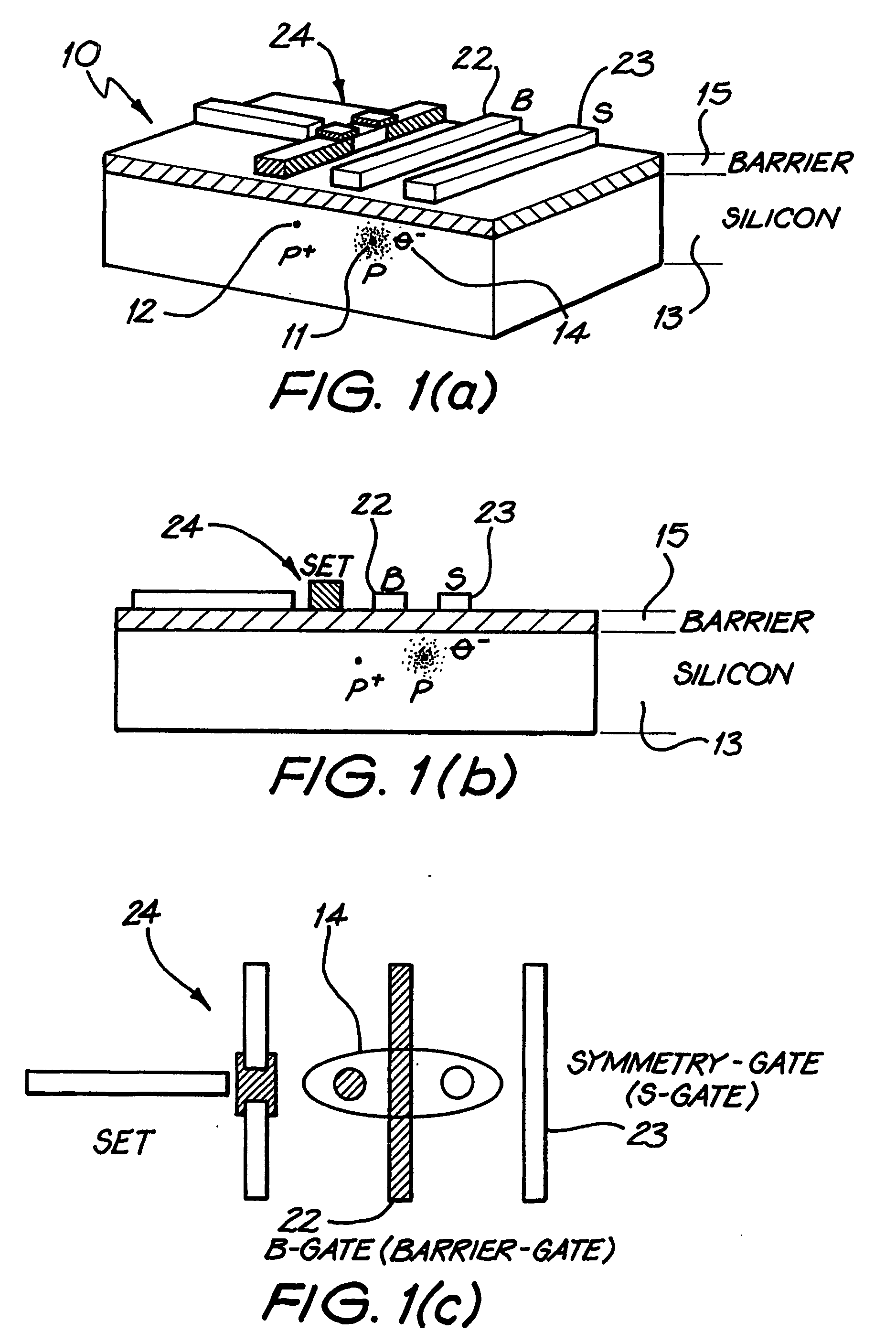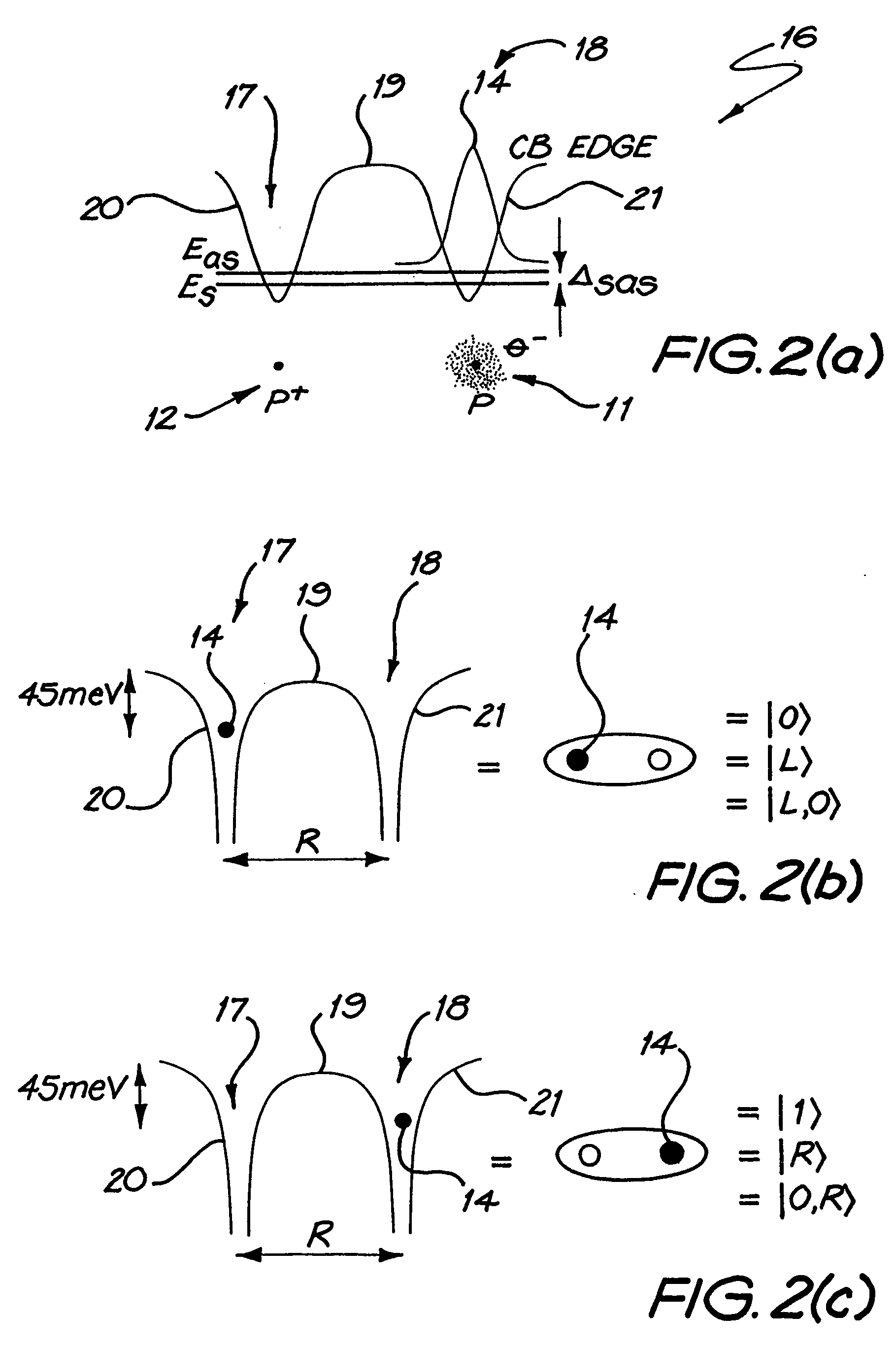Solid state charge qubit device
a qubit device and solid state technology, applied in semiconductor devices, instruments, computing, etc., can solve the problems of increasing the number of qubits, and achieve the effects of reducing the number of qubits, and facilitating the performance of nanofabrication
- Summary
- Abstract
- Description
- Claims
- Application Information
AI Technical Summary
Benefits of technology
Problems solved by technology
Method used
Image
Examples
Embodiment Construction
The P—P+ Charge Qubit
[0086] Referring first to FIGS. 1 and 2, a charge qubit 10 is based on electrons localized by two donor P atoms 11 and 12 buried in a silicon substrate 13. Each qubit comprises an “artificial molecule” P—P+ system in which a single electron 14 remains. The other donor electron must previously be removed from the system by an ionization process, such as electric field induced ionization produced by suitable gate biaising. Gates placed above the buried P—P+ system, on a non-conducting barrier layer 15 allow for external control.
[0087] The remaining electron 14 exists in a double-well potential 16, in one or other of the wells. In the potential diagrams the double-well potential 16 has a left-hand well 17 and a right hand well 18. Between the wells is a potential barrier 19, and there are potential barriers 20 and 21 outside the wells. A basic qubit and definition of logical states in terms of left 17 and right 18 localized states with respect to the double-well...
PUM
 Login to View More
Login to View More Abstract
Description
Claims
Application Information
 Login to View More
Login to View More - R&D
- Intellectual Property
- Life Sciences
- Materials
- Tech Scout
- Unparalleled Data Quality
- Higher Quality Content
- 60% Fewer Hallucinations
Browse by: Latest US Patents, China's latest patents, Technical Efficacy Thesaurus, Application Domain, Technology Topic, Popular Technical Reports.
© 2025 PatSnap. All rights reserved.Legal|Privacy policy|Modern Slavery Act Transparency Statement|Sitemap|About US| Contact US: help@patsnap.com



